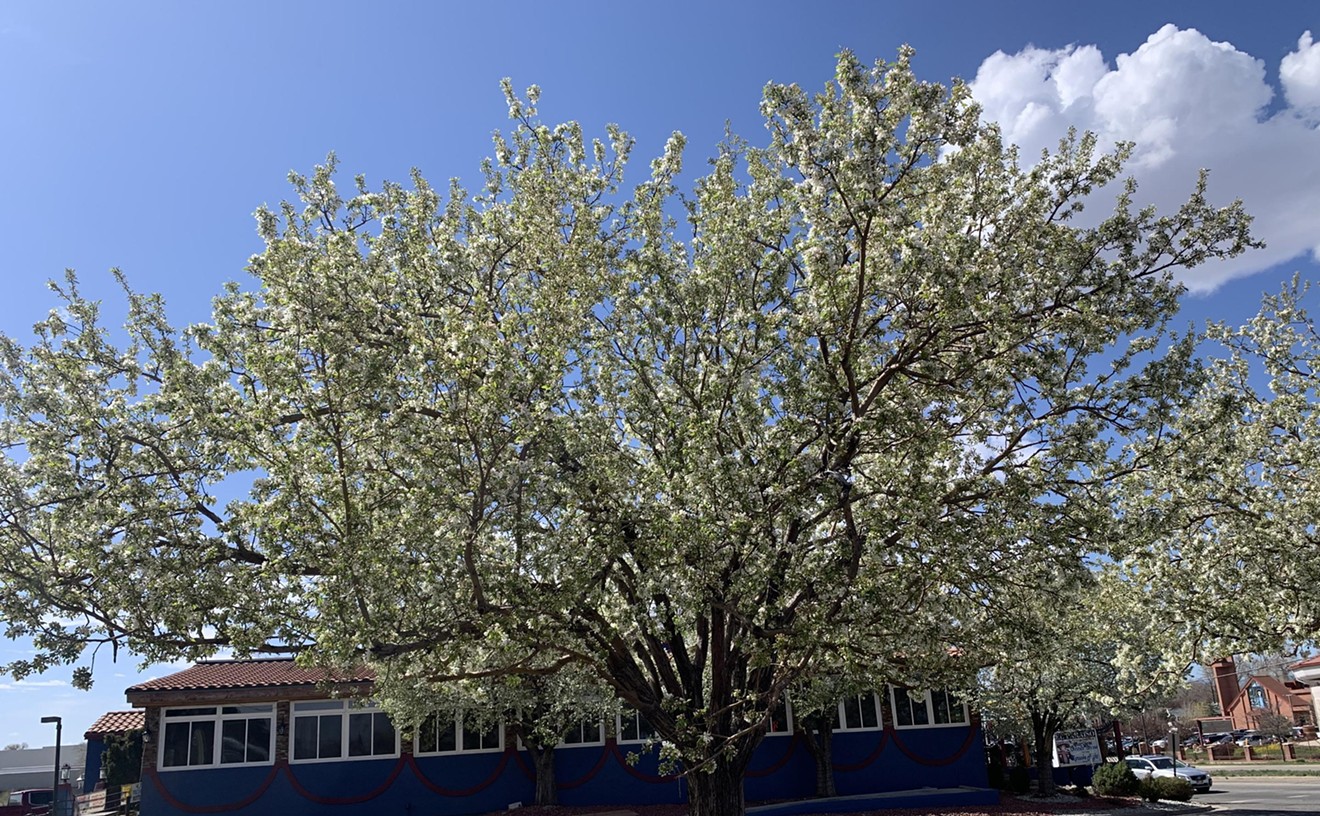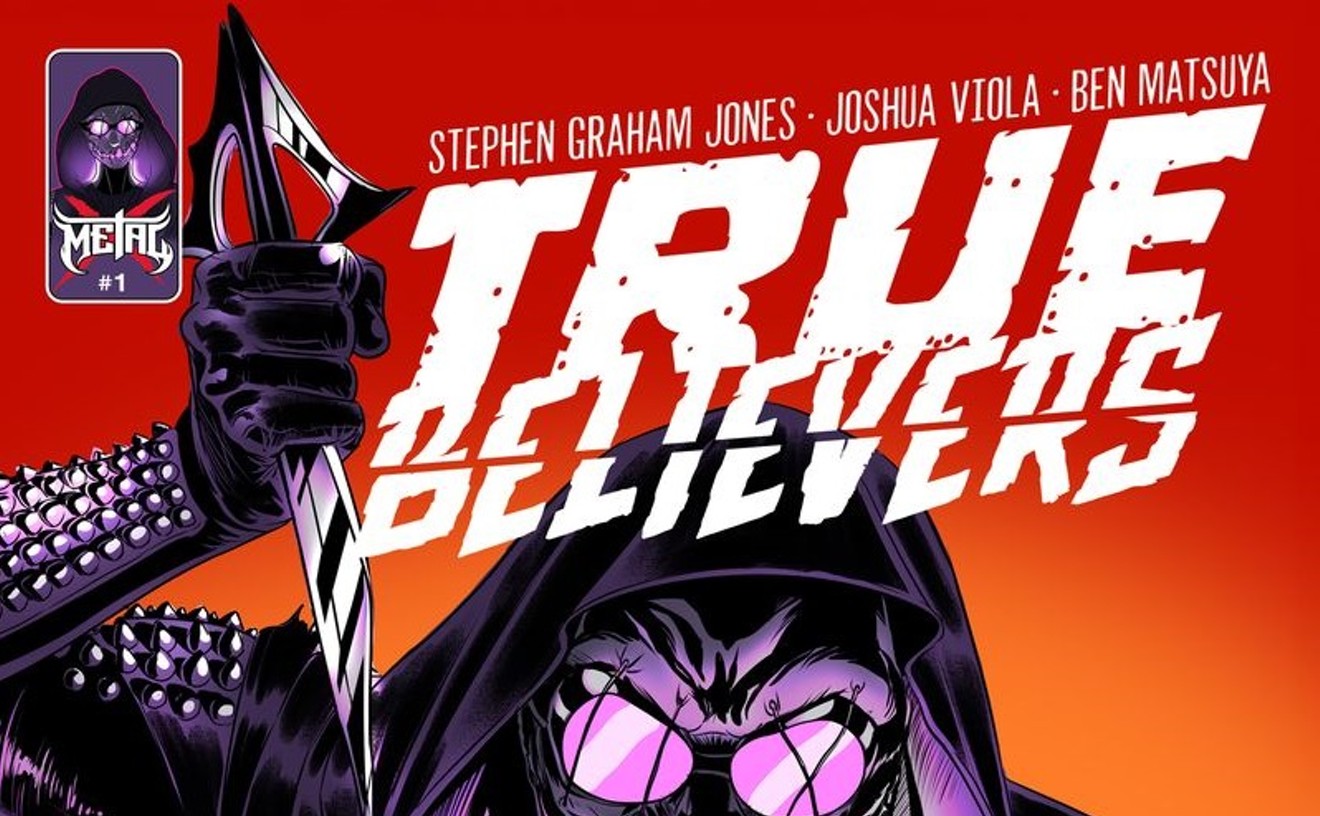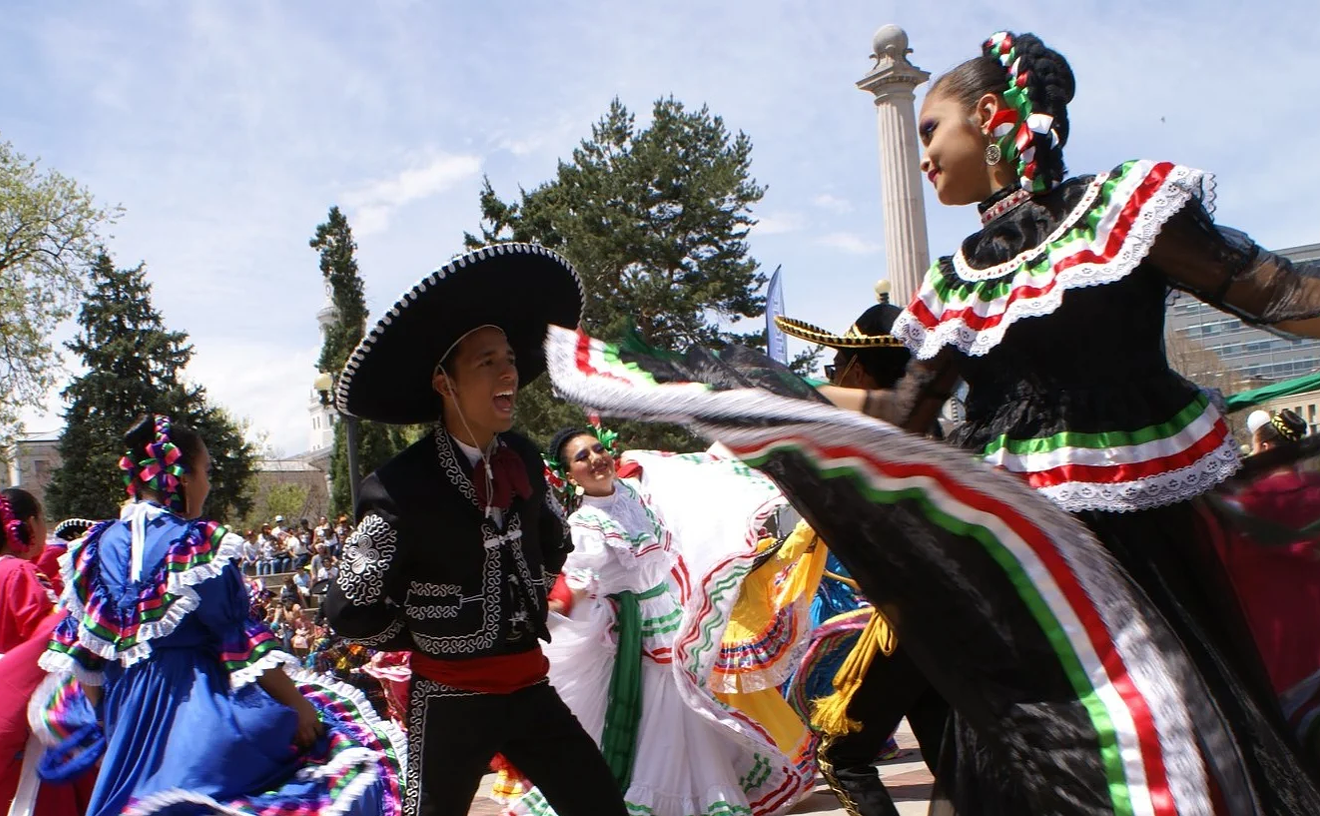The reliable William Havu Gallery has hit a groove this fall by establishing a theme for a series of exhibits: regional subjects by regional artists. The season opener was Western Not Western, which featured varying interpretations of Western subjects. Next week, there's a Jeff Aeling solo made up of neo-traditional landscapes, and then, after the first of the year, there will be a show dedicated to the husband-and-wife duo of Tracy and Sushe Felix, who push the Western landscape through their individual yet linked sieves of retro-modernism.
The current show, Habitats, which closes this weekend, is part of this curatorial bent. For it, director Bill Havu and gallery manager Nick Ryan brought together paintings and works on paper that feature close-ups of nature, particularly flowers and plants. The pieces on view were created by a trio of artists: an important New Mexico realist, Jane Abrams, and two well-known Coloradans, Jean Gumpper and Betsy Margolius.
The entry space and the adjacent window space are given over to oil paintings on linen and handmade paper by Abrams, a professor emeritus at the University of New Mexico, where she taught painting, drawing and printmaking for more than thirty years. For this body of work, Abrams has captured a tiny portion of the view from above as she looks down at her feet.
Interestingly, despite the intimacy of her topics, Abrams often addresses them in monumental ways, so that fallen leaves and flower petals are rendered beyond life-sized. And unlike the typical approach to landscape painting, which presents a scene with a foreground and background, Abrams often employs an all-over composition, similar to an abstract. Her expressionist brushwork also recalls abstract techniques. All of her pieces have a high painterly standard, but a few stood out to me, including "Silvery Pond" and "Capricorn Morning."
Around the corner and extending into the area under the mezzanine at Havu is a selection of Gumpper's remarkably accomplished woodcuts. A visiting artist and professor at Colorado College, Gumpper compares printmaking to hiking, which she does to find her subjects. Her work is internationally known, and it's easy to see why: From a technical standpoint alone, these prints are breathtaking.
Gumpper's compositions are extremely dense with elements and must have required many wood blocks to pull off, even with the added benefit of the stencils and hand-tinting used in the pochoir technique. In "Pond Edge IV," for example, she captures the reflection of a tree branch in pond water as seen through a screen of reeds; the result is beautiful and sumptuous. In the related "Sunrise I-IV," Gumpper creates a mural-like effect by running the depiction of a pond's bank across four large vertical woodcuts.
The last of the three artists in Habitats is Margolius, whose work is at the foot of the stairs and on the mezzanine. A longtime Colorado artist, Margolius has been exhibiting since the 1970s. Her signature work of the past few decades involves a collision of representational art and constructivism: Using oil paint, monotype and chine collé, among other mixed-media methods, she assembles various small scenes, often renderings of flowers, and organizes the various parts into geometric arrangements of rectangles. Some of the finished works are verticals, but Margolius is best known for her exaggerated horizontals. Each of the rectangles includes its own subject and distinctive palette, with the artist taking pains to create clear divisions between the separate parts while establishing a visually harmonious rhythm.
Although it comprises three interlocking solos, Habitats functions as a seamless group show because of the shared subject and because the three artists involved have stylistic affinities.
The work of another Colorado artist is on view at the David B. Smith Gallery. Don Stinson: The Road to Valentine is a collection of large contemporary-realist views of the American West.
Stinson is probably best known for his diptych at the Denver Art Museum titled "The Necessity of Ruins." Though the piece is not currently on display, it's familiar to many, since it's a popular attraction of the Western collection. "Ruins" is a depiction of an abandoned drive-in movie theater; the scene is anchored by a weathered movie screen in one panel and by the natural landscape in the other, and the two paintings have been tied together with a drive-in speaker stand. In this piece, Stinson lays out the key to his chief interest: exploring the way society has intruded on nature.
Most of the paintings in this show were done in the last year or two and are set in Colorado, Utah or New Mexico; nearly all of them include buildings or other structures as significant elements. When I ran into Stinson at the gallery, he remarked that everything was set in the morning — shortly before, during, or immediately after sunrise. He also noted how important it was for him to be part of a longstanding tradition — the landscape — in regional art, saying that it helps to define what's special about an artist living in this part of the country. It was Stinson who remarked during a panel discussion in 2007 that the Rockies were a celebrity landscape — and he's right. And it was our scenery that created a nascent art world in this part of the country more than a century ago, even if the landscape is now just one of many approaches being taken by artists around here.
Stinson's technique in oil on linen seems to come out of the classic realist tradition, with the paint applied smoothly and brushmarks kept to a minimum. Though he's best known for his depictions of rural ruins, Stinson also does renderings of other artworks. The first of two in this show is a view of the famous "Spiral Jetty," by Robert Smithson, that juts into the Great Salt Lake. In the Stinson, the jetty is in the foreground, with the curving clouds in the background creating a marvelous pictorial balance. And what more can you say about a traditional depiction of a conceptual object? It's brilliant.
Also great is the diptych "Early Winter Morning: Genesee Park," in which Charles Deaton's famous "Sculptured House" is illuminated before dawn in the panel on the left while the one on the right catches the twinkling lights of early morning in Denver.
Don Stinson at Smith is the first solo the artist has had in years, and it's a majestic offering.










